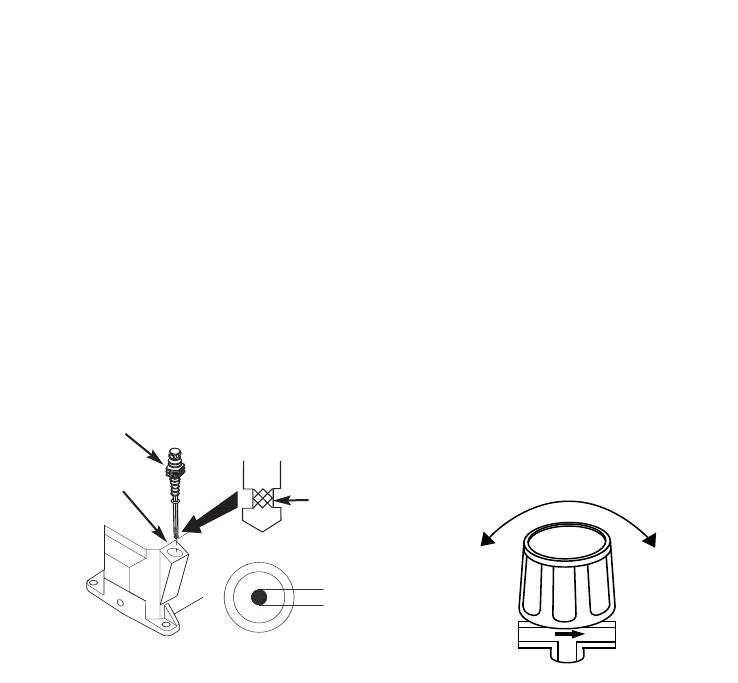
9
1
. Belt Guard.
T
he belt guard encloses
the pulleys and drive belt. It protects
the user from moving parts and
directs cooling air to the compressor
pump
2. Air Filter. The air filter keeps dirt and
debris from entering the compressor
pump and reduces compressor noise.
3. Dipstick/Oil Sight Glass. The dip-
stick and oil sight glass both measure
the oil level in the compressor pump.
Your compressor may have either a
dipstick or an oil sight glass.
4. Handles. Used to move the compres-
sor.
5. Tank Drain Valve. The tank drain
valve allows moisture to be removed
from the tank.
NOTE: Each tank has its own tank
drain valve.
6. Unloader. The unloader controls the
engine rpm. When loaded, the engine
will run at maximum operating speed
and air will enter the tank. When
unloaded, the engine will slow to an
idle and air will vent to atmosphere.
7. Air Storage Tanks. The tanks store
air for later use.
8
. Regulated Outlet Gauge.
T
his gauge
shows at-a-glance, air pressure at
outlet. Air pressure is measured in
pounds per square inch (PSI). Most
tools have maximum pressure ratings.
Never exceed the maximum pressure
rating of the tool you are using. Be
sure this gauge reads ZERO before
changing air tools or disconnecting
hose from outlet.
9. Regulator Knob. This knob controls
air pressure to an air operated tool or
paint spray gun. Turning the knob
clockwise increases air pressure at
the outlet. Turning counterclockwise
will lower air pressure at the outlet.
Fully counterclockwise will shut off the
flow of air completely.
10. Tank Pressure Gauge. Gauge
shows pressure in air receiver
indicating compressor is building
pressure properly.
11. ASME Safety Valve. This valve
automatically releases air if the
tank pressure exceeds the preset
maximum.
12. Air Outlet Fittings. These fittings
are 1/4” universal-style quick connect
fittings and allow rapid tool changes.
Close
Open
Dipstick
Add Oil
Fill
Line
Max
Low
Full
Add Oil


















